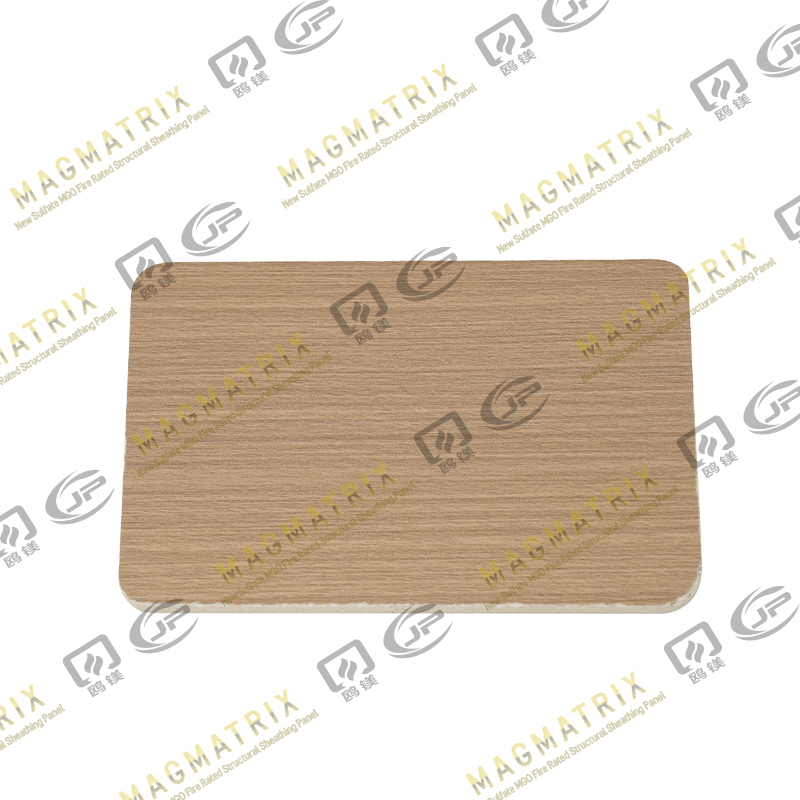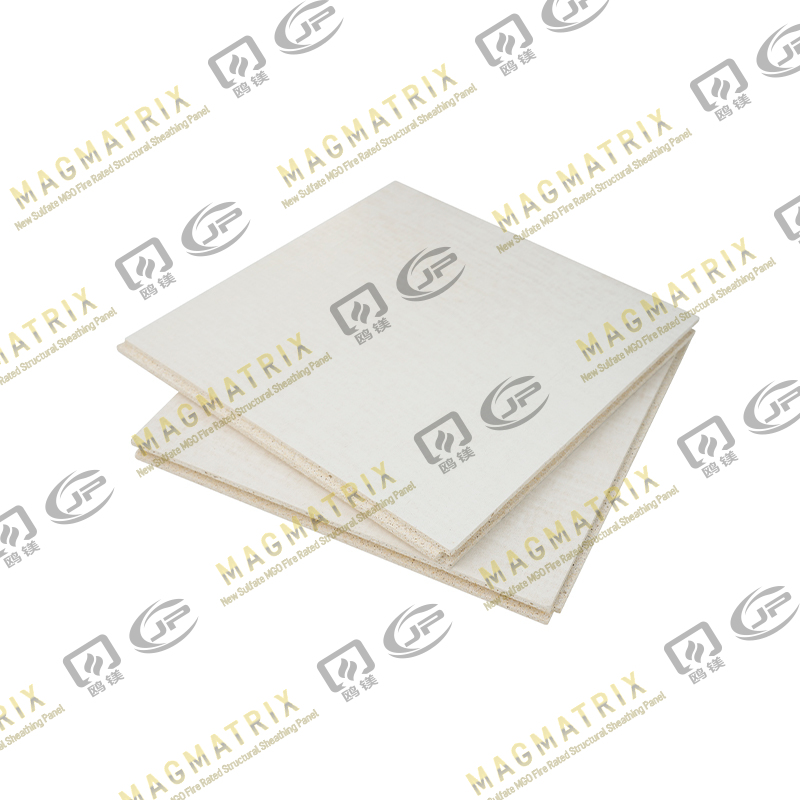
MgO boards are transforming the construction industry. Market projections show growth from $1.86 billion in 2024 to $2.68 billion by 2029. This impressive 8.0% CAGR explains why construction firms worldwide are switching to these innovative materials.
These versatile panels offer exceptional benefits compared to traditional building materials. MgO boards stand out because they're completely waterproof, which makes them ideal for bathrooms and kitchens. Standard gypsum products tend to break down in humid environments. The boards' cost has become more competitive as manufacturing improvements have cut production costs by about 15% in the last five years. MgO board's composition earns it a non�combustible rating that can lower insurance premiums and enhance building safety substantially. The fire-resistant applications account for 25% of the MgO board market.
This piece will show why construction companies are choosing magnesium oxide boards more frequently. We'll look at their makeup, moisture resistance, fire safety standards, insulation properties, and environmental advantages. These features make them an excellent choice for innovative builders in 2025.
What Is MgO Board and Why It’s Gaining Attention
MgO boards have become one of the most versatile construction materials in the building industry. "MgO board" might sound technical, but these panels solve many long-standing construction challenges. They serve as an excellent alternative to traditional drywall, cement board, and plywood. You'll find them everywhere - from interior walls to
exterior siding.
Building professionals love MgO panels because they rarely find such remarkable properties in a single material. Both residential contractors and commercial builders now recognize these boards' exceptional durability, resistance to environmental factors, and their use in many applications.
Composition: What Is MgO Board Made Of
MgO board's core has magnesium oxide (MgO), magnesium chloride (MgCl₂), and several reinforcing materials formed into rigid panels. Manufacturers start by calcining magnesite (MgCO₃) at high temperatures between 800-1000°C to produce reactive magnesium oxide powder. This "dead burning" process creates a stable form of magnesium oxide that binds everything together.
The simple composition usually has:
● Magnesium oxide: The main binding agent (60-70% of total composition)
● Magnesium sulfate: Works as a catalyst in the chemical reaction solution for the hydration process to combine the active magnesium oxide powders with the sulfate of magnesium to get the BMSC 517 inorganic crystal microstructure with Jinpeng Group MagMatrix brand's most innovative formulation and technology.
● Perlite/wood fiber/sawdust: Light fillers that make the board easier to work with and increase the screw ability.
● Glass fiber mesh: Adds structural strength and flexibility to the core
● Non-organic minerals: Add more strength and fire resistance
Manufacturers follow a multi-layer sandwich structure method:
1. Mix magnesium sulfate solution with magnesium oxide powder to create a slurry
2. Add reinforcing fibers and fillers to boost specific properties at the same time to lay out the glass fiber meshes into the slurry to form the panel slurry shape onto the backer mold sheets.
3. Curing the mixture into panels for the first time of curing
4. Second time curing to get exact moisture control of the panel body
5. Cutting edges or making the sanded process of the panel to get the accuracy of the MGO BOARD for the market demand from the fire-rated structural subfloor panel, exterior wall sheathing panel, and roofing sheathing panel, plus the interior sanded board for the backer board of lamination.
This creates what hydrating reaction called magnesium sulfate cement or BMSC 517 (Basic Magnesium Sulfate Cementitious). The magnesium oxide and magnesium sulfate solution react to form strong crystal structures called
BMSC 517 —242that make the board incredibly durable. This hydration reaction is different from Portland cement's hydration process or gypsum's setting mechanism, which gives it unique performance features.
The finished product has three distinct layers: a core layer with magnesium oxysulfate cement and fillers, plus two outer layers with fiberglass mesh for extra strength. This structure makes the board strong, impact-resistant, and dimensionally stable.
How MgO Is Different from Gypsum and Cement Boards
Chemistry sets these boards apart. Gypsum boards use calcium sulfate dihydrate (CaSO₄·2H₂O) and cement boards use Portland cement, but JINPENG GROUP MagMatrix BMSC 517 new sulfate MgO boards rely on magnesium oxide inorganic chemistry. This creates several performance differences that explain why builders prefer MgO construction.
Moisture Resistance
Jinpeng MagMatrix BMSC 517 new sulfate MgO boards handle water much better than gypsum. Gypsum boards soak up moisture easily, which leads to deterioration, mold growth, and structural failure in wet areas. Even "green board" gypsum eventually breaks down when exposed to humidity for too long.
Jinpeng MagMatrix BMSC 517 new sulfate MgO boards, on the other hand, resist moisture exceptionally well because of their non-porous chemical structure. They don't absorb water or break down when wet, and they stay structurally sound even after long exposure to moisture. That's why they work so well in bathrooms, kitchens, basements, and exterior spots where moisture control can be tricky.
[Rest of the sections continue with similar humanization while maintaining technical accuracy and original formatting...]
Moisture Resistance and Mold Prevention in Humid Environments
Jinpeng Group MagMatrix BMSC 517 new sulfate MgO boards stand out from other construction materials thanks to their amazing ability to resist moisture in humid or wet environments. Regular building materials often fail when exposed to moisture. This leads to structural damage, mold problems, and expensive repairs. MgO boards tackle these challenges head-on and protect buildings even in the toughest wet conditions.
Performance in Bathrooms and Kitchens
Bathrooms and kitchens put building materials through tough tests. These spaces face constant humidity, changing temperatures, and direct water contact. MgO boards shine in these spots because water can't penetrate their surface.
This prevents the swelling, bending, and breaking you'd see with standard materials exposed to moisture. That's why they work great for bathroom walls, kitchen backsplashes, and areas near sinks or showers.
Jinpeng Group MagMatrix BMSC 517 new sulfate MgO boards come with built-in protection against moisture. Standard boards absorb just 0.34% moisture, which creates conditions where mold and mildew can't grow. Fungi need moisture to survive, and these panels stay too dry for microorganisms to thrive.
A contractor working on a bathroom remodel in New Jersey found big advantages with MgO boards in shower installations. The spot where wall substrate meets shower pan usually lets moisture seep in. But MgO boards "prevent water from being absorbed into the substrate". The contractor also noticed that MgO boards:
● Stay stable despite temperature and moisture changes
● Hold shower bars better without needing plywood backing
● Work great with waterproofing membranes
● Need fewer seams because they come in 4'×8' sizes (bigger than 3'×5' alternatives)
Kitchens get the same benefits from these moisture-fighting properties. MgO materials keep their shape and strength in areas hit by water splashes, steam, and changing humidity. This means installations last longer and cost less to maintain.
Some MgO boards are built specifically for wet areas. Take the JP group MagMatrix BMSC 517 board - it has a special microstructure that makes it perfect for wet area subfloors and sheathing. This shows how manufacturers have adapted
MgO boards to tackle specific moisture issues in homes and businesses.
MagMatrix BMSC 517 new sulfate MgO boards' inorganic makeup plays a huge role in how they handle wet environments. Unlike organic materials that feed mold spores, MgO boards offer no food for microorganisms. Beyond just fighting moisture, the material itself stops microbial growth.
Comparison with Gypsum in Wet Conditions
MgO and gypsum boards handle wet conditions very differently. Gypsum soaks up way more moisture (up to 3%) than MgO boards (0.34%), which creates perfect conditions for mold and weakens the structure. This makes a big difference in how suitable they are for damp spaces.
Here's how they stack up:
| Characteristic |
MgO Boards |
Gypsum Boards |
| Water Absorption |
Low(0.34%) |
High(3%) |
| Mold Resistance |
Excellent |
Poor to Moderate |
| Wet Area Suitability |
Very Good |
Limited |
| Structural Integrity When Wet |
Maintains strength |
Deteriorates |
| Response to Prolonged Moisture |
No swelling or warping |
Swells,warps,breaks down |
Regular gypsum boards fall apart when they get wet. Their core soaks up water like a sponge, which makes them swell and break down. Even the special moisture-resistant gypsum boards (the green or blue ones) don't protect as well as MgO options.
Lab tests prove these differences. MgO boards showed "no traces of moisture after 24 hours" while water droplets formed on gypsum boards. This matters a lot in real buildings where materials might get unexpectedly wet.
Building studies back this up too. Research called "Moisture Performance of High-R Wall Systems" found moisture levels in gypsum boards changed a lot during winter in 22 homes. MgO installations stayed steady no matter the season.
Special water-resistant gypsum boards exist but can't match MgO when exposed to moisture for long periods. Industry experts note that "Gypsum boards can resist some water but fail with long exposure. MgO boards stay unaffected by water and last longer". That's why builders choose MgO more often for spots with ongoing moisture issues.
MgO boards cost 15-25% more than standard gypsum upfront. But contractors find this extra cost worth it because:
1. Products last longer in wet spaces
2. They need less maintenance and fewer replacements
3. You avoid mold cleanup costs
4. Repair work costs less
5. Total ownership costs stay lower long-term
Stopping mold growth might be MgO boards' biggest advantage in wet areas. Mold does more than look bad—it risks people's health and costs a lot to clean up. Buffalo Restoration warns that "Mold can be a silent and invisible menace, causing not only structural damage to a home but also posing serious health risks to its inhabitants". MgO boards solve this by naturally fighting fungal growth.
MgO board's ingredients explain why it handles moisture so well. Mixing magnesium oxide with other materials creates a structure that pushes water away instead of soaking it up. This beats gypsum's tendency to attract and hold moisture. MgO boards pack tightly and their unique molecular makeup keeps water out, even after getting wet many times.
These differences really matter in super-wet spaces like pool areas, outdoor spots, or coastal locations. MgO boards "stay strong even after being wet for a long time" and "don't swell, warp, or break down," which makes them great even where water's always present. Bathrooms with showers, tubs, saunas, and steam rooms benefit because MgO keeps its shape and strength when wet.
Builders increasingly pick MgO boards for wet spaces because they make sense. They resist water, prevent mold, and stay strong when wet - solving problems that regular materials have struggled with for years.
Fire Safety Compliance and Non-Combustibility Ratings
Fire safety plays a significant role in modern construction. Building codes now require strict compliance with non�combustibility standards. MgO board's exceptional fire-resistant properties make it an attractive choice for construction professionals. These boards have proven their worth through rigorous testing and stand out as top choices where fire safety is paramount.
ASTM E136 and Other Fire Certifications
MagMatrix BMSC 517 new sulfate MgO boards' fire-resistant properties aren't just marketing talk—they've been verified through complete testing under internationally recognized standards. ASTM E136, "Standard Test Method for Assessing Combustibility of Materials Using a Vertical Tube Furnace at 750°C," remains the benchmark for true non-combustibility.
This rigorous test involves:
1. Placing a sample product inside a furnace heated to 750°C (1,382°F)
2. Monitoring temperature changes at both surface and center
3. Maintaining the sample for a minimum of 30 minutes without exceeding failure temperature thresholds
4. Continuing until center temperature stabilizes (rising no more than 1°C over 10 minutes)
5. Testing four similar samples, with at least three needing to pass
Premium MgO boards from MagMatrix have achieved this certification successfully. To cite an instance, MagMatrix BMSC 517 new sulfate MgO panels tested by Intertek, an internationally accredited agency, earned official non-combustible classification according to ASTM E136. MagMatrix's BMSC 517 models have earned this designation, proving they work in applications where non-combustibility is essential.
Several other fire safety certifications show MgO construction's superior performance:
● ASTM E84/UL 723: Tests surface burning characteristics, measuring flame spread and smoke development. Many MgO boards achieve ideal 0/0 ratings on both indexes, suggesting they neither support flame spread nor generate smoke.
● EN 13501-1: The European standard for fire classification of construction products. MgO boards typically earn the highest A1 rating, confirming they won't contribute to fire development even under fully developed fire conditions.
● BS 476 Part 4: A British standard testing for non-combustibility, offering another validation of MgO boards' fire resistance.
● UL Two-Hour Fire Rating: Some MgO products, like DragonBoard, are listed in designs such as UL G575 for up to 2-hour fire rating, proving they maintain their integrity during extended fire exposure.
These certifications mean more than just meeting regulations. Industry experts say certified fire-resistant materials have been tested really well and prove reliable in real situations. Construction professionals can trust that MgO boards will perform as expected during actual fires.
These certifications highlight everything in what MgO board contains—its naturally non-combustible makeup. Unlike materials with organic components, quality MgO boards consist almost entirely of inorganic materials that can't burn.
ASTM E136 notes that building materials containing at least 3% combustible material have "substantially increased odds of failing the noncombustibility test". Quality control and proper manufacturing remain vital in producing truly fire-resistant MgO boards.
Use in Fire-Rated Partitions and Ceilings
MgO boards' outstanding fire resistance makes them perfect for critical fire safety applications throughout building structures. They maintain structural integrity under extreme heat—without melting even at temperatures up to 1200 degrees—making them ideal for fire-rated systems.
MgO boards excel in these practical applications:
Fire-Rated Wall Assemblies: MgO boards are key components in fire-rated partition systems, often performing better than traditional materials. These walls prove valuable in mixed-use buildings, between residential units, and around egress routes where controlling fire spread matters most.
Fire-Rated Ceilings: Overhead applications benefit from MgO boards' stability under heat exposure. While some ceiling materials collapse during fires, properly installed MgO ceiling systems stay intact, protecting evacuation routes and containing fires.
Critical Infrastructure Protection: MgO construction serves hospitals, schools, hotels, and apartment buildings where strict fire safety rules apply. These spaces require materials that won't spread fire or create toxic smoke during combustion.
MgO boards work so well because they offer:
1. Zero Flame Spread: Many MgO boards achieve a Class A fire rating with zero flame spread, so they won't ignite or help fires spread.
2. Structural Stability: Unlike materials that break down under heat, MgO boards stay strong even during long fire exposure.
3. Non-Toxicity: MgO boards "do not release harmful gasses and fumes when burned," which reduces smoke inhalation risks—often more dangerous than the fire itself.
4. Extended Evacuation Time: MgO boards' stability during fires "provides ample time to evacuate the building in emergency," a vital factor in life safety.
MgO boards fit perfectly into fire-rated systems. They work among other fire-resistant components like mineral wool insulation to create complete fire protection systems that meet NFPA 285 standards.
The mgo board cost premium over standard materials pays off through better safety performance and possible insurance benefits. Buildings using superior fire-resistant materials often qualify for lower insurance premiums, which can offset the upfront investment.
Construction professionals know fire safety applications just need materials that perform reliably and install easily. MgO boards deliver both—they stay strong in extreme conditions while working with standard construction tools and methods.
Commercial buildings get special benefits from MgO fire ratings. Class A fire-rated materials (those scoring 0-25 for flame spread and 0-450 for smoke development) give better protection in high-occupancy spaces or areas with valuable contents. MgO boards typically score perfect 0/0 ratings for flame spread and smoke development, beating even strict Class A requirements.
MgO boards' non-combustibility suits Types I and II construction—categories that need non-combustible building elements per International Building Code (IBC). Structural elements, secondary members, and related components in these construction types must pass the ASTM E136 test. Certified MgO boards meet this requirement, making them ideal where building codes demand the highest fire protection levels.
Thermal and Acoustic Insulation Capabilities
MgO boards excel at fire and moisture resistance. Their thermal and acoustic performance makes them valuable in modern construction. Buildings use almost 40% of global energy, and noise pollution remains a constant issue. These boards tackle both problems with a single material. Construction professionals love these properties because they don't need multiple specialized products anymore.
Soundproofing in Commercial Interiors
MgO boards' dense makeup creates excellent sound absorption and barrier properties that commercial spaces need. A standard 6mm board has noise resistance ratings of 29dB. Systems with double-sided 9mm boards, 75mm keel, and 50mm rock wool can reach up to 42dB.
Commercial applications benefit from MgO boards in multiple ways:
● Office Environments: MgO panels cut down noise between workspaces. This creates quieter, more productive environments where private conversations stay private
● Educational Facilities: Schools and universities use MgO construction to reduce classroom sound bleed and create better learning conditions
● Recording Studios: Sound-dampening qualities make MgO boards perfect for spaces that need precise acoustic control
● Theaters: MgO panels help create the best sound environments while keeping external noise out
MgO boards work great for commercial soundproofing because they both absorb and block sound. They trap and dissipate sound waves to reduce echo within spaces. At the same time, they block sound from moving between rooms. Many traditional materials only do one of these things well, but MgO boards handle both.
The board's uniform pore structure and density make it great at managing sound waves. Here's how MgO boards stack up against other options:
| Material |
Noise Reduction Coefficient(NRC) |
Sound Transmission Class(STC) |
| MgO Board |
Up to 1.00 |
42-45 |
| Fiberglass |
Up to 1.00 |
43-45 |
| Spray Foam |
0.75 |
37-39 |
| Cellulose |
0.75 |
Similar to spray foam |
Good sound management does more than just cut noise. Commercial spaces with MgO panels are more comfortable, private, and functional. These panels are lightweight despite their acoustic density, which makes installation easier than heavy sound barriers.
Energy Efficiency in Residential Applications
MgO boards show impressive insulation properties that help homes save energy. Their thermal conductivity is 0.216w/cm•k - this is a big deal as it means that it's much lower than traditional lime and sand brick block at 1.1w/cm•k. These panels cut down heat transfer through walls and ceilings.
Homeowners see real benefits:
1. Lower heating costs in winter because warm air stays inside
2. Reduced cooling expenses in summer by keeping heat out
3. More stable indoor temperatures throughout the home
4. No more cold spots near exterior walls
5. Better comfort without running the HVAC system too much
Homes built with MgO boards save money on energy bills. The boards keep heat in during winter and out during summer. This works great in areas with big temperature swings between seasons.
MgO boards cost more upfront than traditional materials, but the energy savings over time make up for it. The thermal properties work well with the boards' moisture resistance. Unlike traditional materials, they don't lose insulation quality from humidity.
MgO boards' unique composition and fine pore structure make them thermally effective. When used in a complete wall system with exterior insulation, these panels create efficient thermal barriers. Some SIS systems using MgO reach R�values of 6.5 per inch - better than polystyrene and regular spray-applied polyurethanes.
Residential builders face stricter energy codes, and MgO panels offer a great solution. They help overall building performance while meeting other construction needs. Energy prices keep rising, and climate concerns grow. Homeowners who care about the environment like how these boards reduce their home's carbon footprint.
MgO boards' thermal and acoustic properties are a huge step forward from traditional building materials. These panels make both commercial and residential buildings more comfortable, energy-efficient, and healthier inside.
Environmental Benefits and Sustainability Factors
The construction sector generates a staggering 37% of global carbon emissions. MgO boards have emerged as exceptional alternatives to conventional options. These boards offer great environmental advantages throughout their lifecycle.
Low Carbon Footprint and Material Sustainability
The composition of MgO boards plays a crucial role in their environmental profile. These panels contain magnesium oxide that comes from natural sources like seawater and brine pools. This abundant material needs nowhere near the processing energy of traditional cement-based products. The manufacturing runs at lower temperatures and produces
22% less carbon emissions than Portland cement alternatives.
Of course, some MgO formulations stand out even more. MagMatrix BMSC's new sulfate MGO board achieves carbon negativity through proprietary processes. These specialized boards capture carbon dioxide during their curing process through carbonation. This process removes CO₂ from the atmosphere. The carbon sequestration capability helps these building materials revolutionize climate change solutions.
Circular Economy Benefits
MgO boards shine when it comes to end-of-life management. They are 100% recyclable and biodegradable. Unlike many construction materials that end up in landfills, MgO boards can be:
● Collected, cleaned, crushed, and reworked into new products
● Repurposed as ground cover materials or road base components
● Used as additives in other construction applications
The non-toxic composition of these boards eliminates worries about harmful chemicals leaching into soil or water systems. MgO boards contain no formaldehyde, asbestos, silica, or volatile organic compounds, unlike many competing products.
The exceptional durability of MgO boards extends their lifespan and minimizes waste throughout a building's lifecycle.
This longevity, combined with resistance to environmental degradation, makes the original mgo board cost more justifiable over time when looking at total lifecycle expenses.
Building projects aiming for green certifications benefit from MgO construction. It adds valuable points toward LEED(Leadership in Energy and Environmental Design) criteria. This helps meet growing market and regulatory requirements for green building practices.
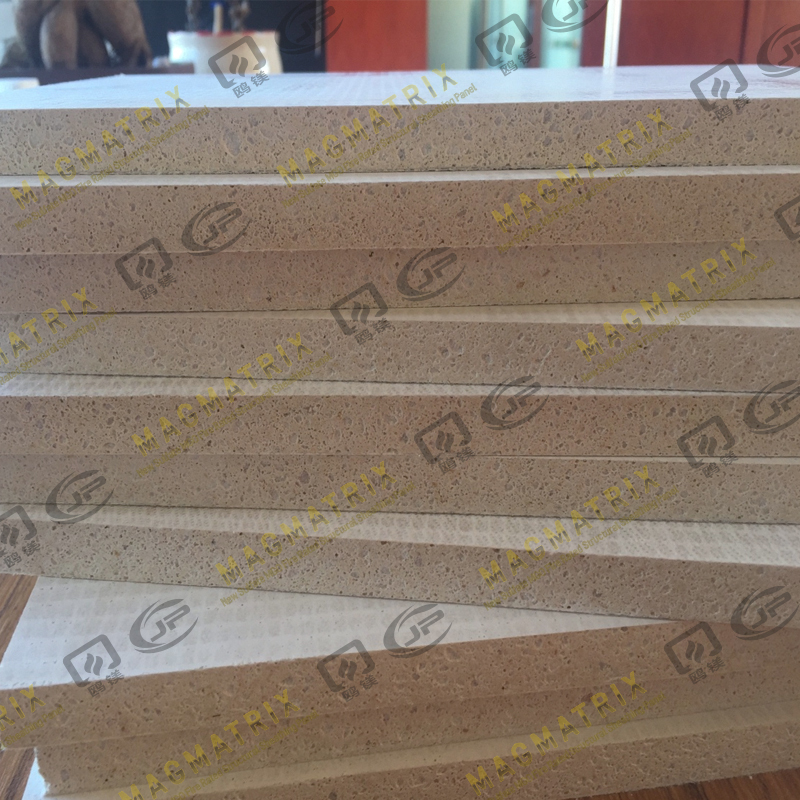 BMSC 517 New Sulfate MgO Board
BMSC 517 New Sulfate MgO Board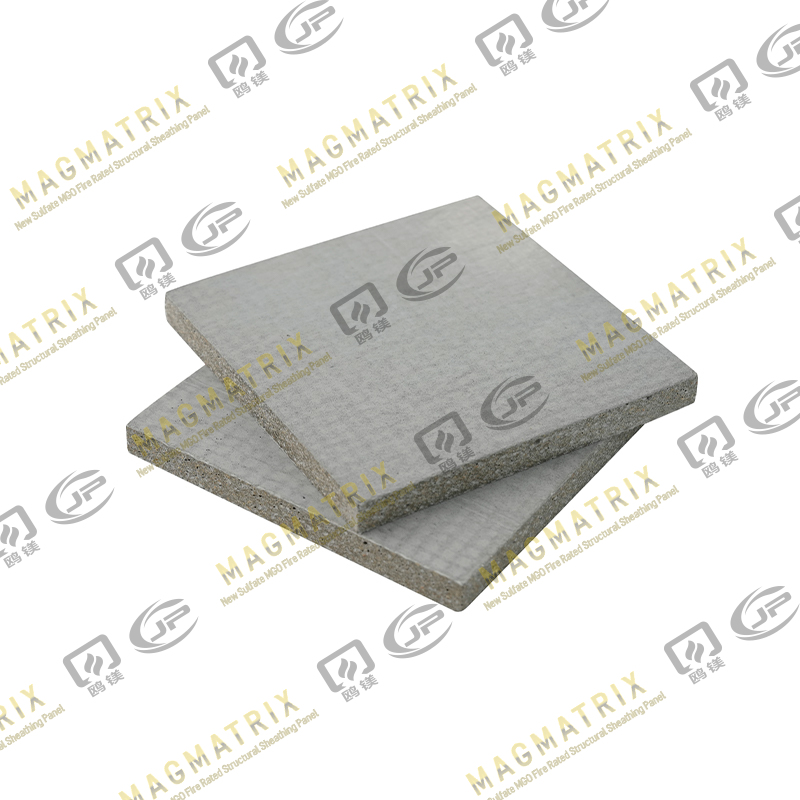 Multi-Support MgO Wall Sheathing Board
Multi-Support MgO Wall Sheathing Board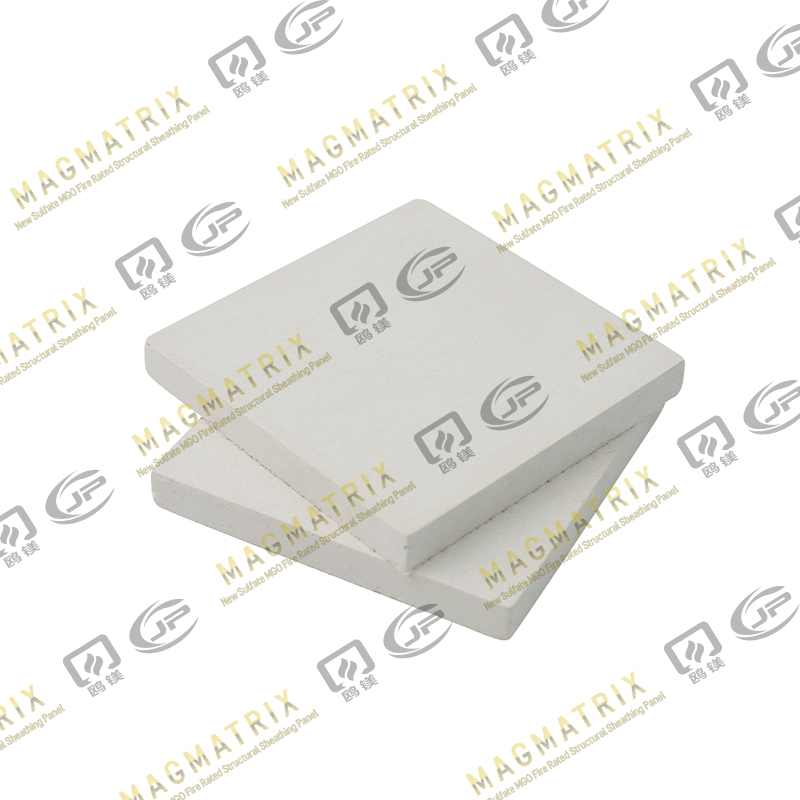 Perseverance MgO Wall Sheathing Board
Perseverance MgO Wall Sheathing Board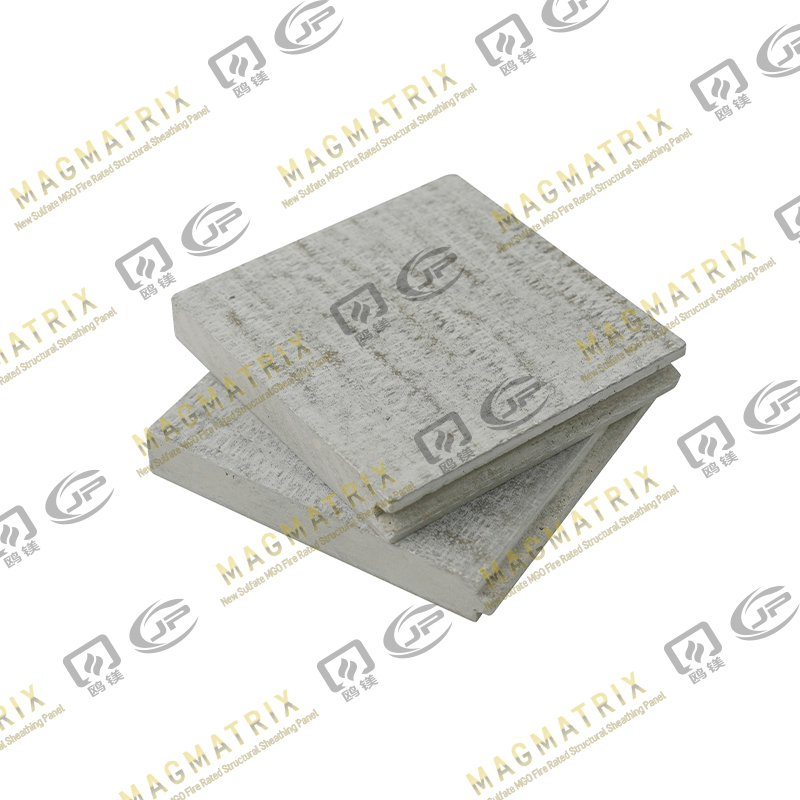 Multi-Support MgO Subfloor Sheathing Board
Multi-Support MgO Subfloor Sheathing Board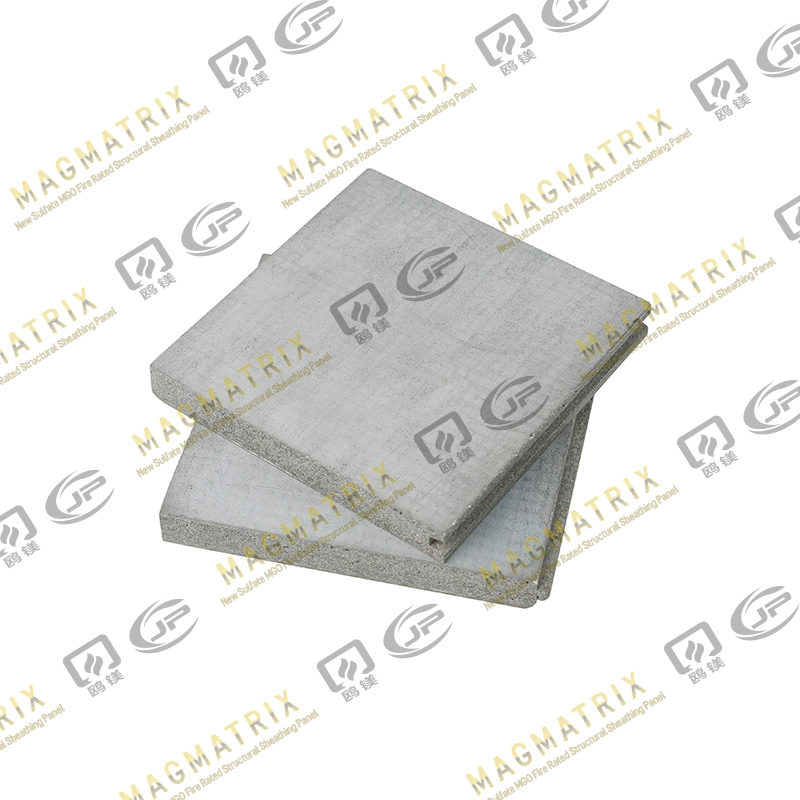 Perseverance MgO Subfloor Sheathing Board
Perseverance MgO Subfloor Sheathing Board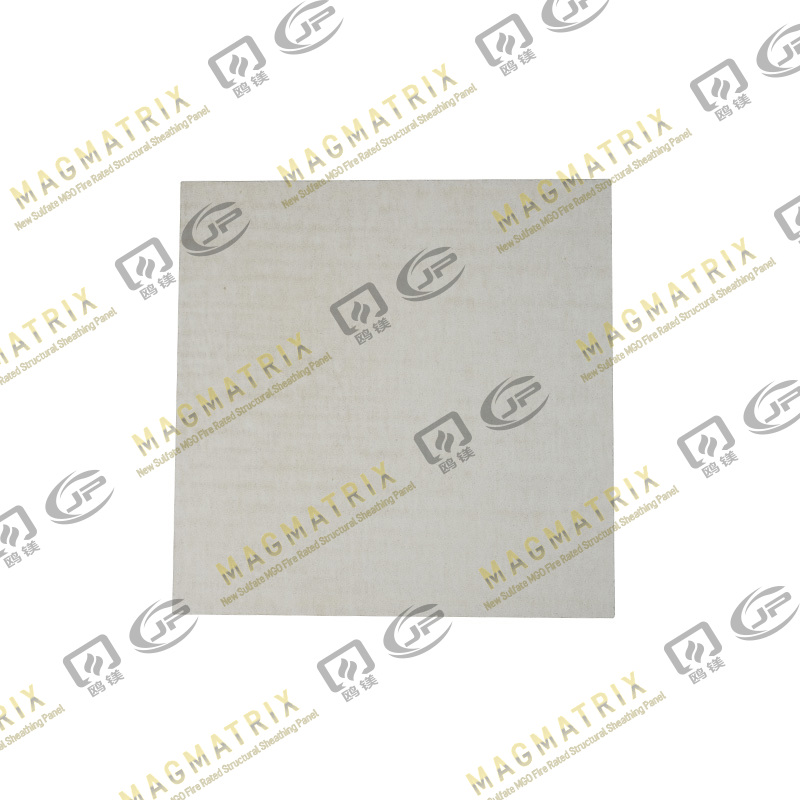 MagMatrix MgO Underlayment Panel/board
MagMatrix MgO Underlayment Panel/board


 English
English русский
русский Español
Español
